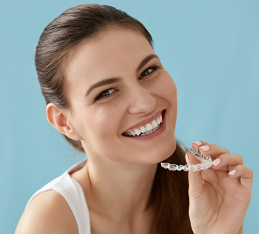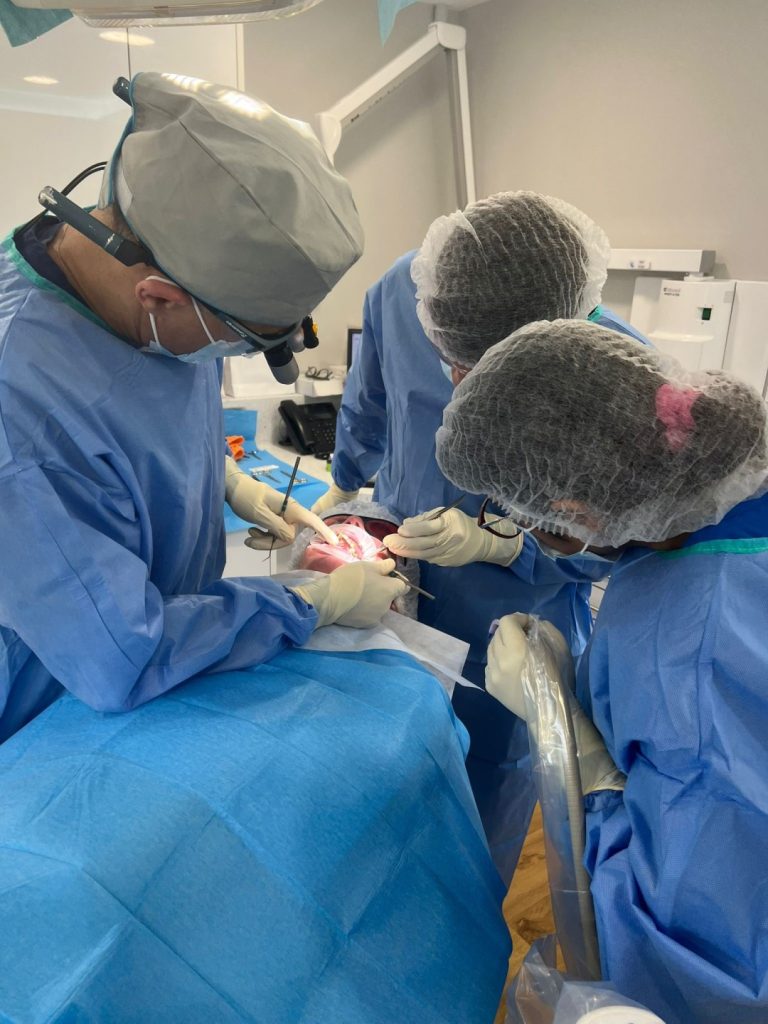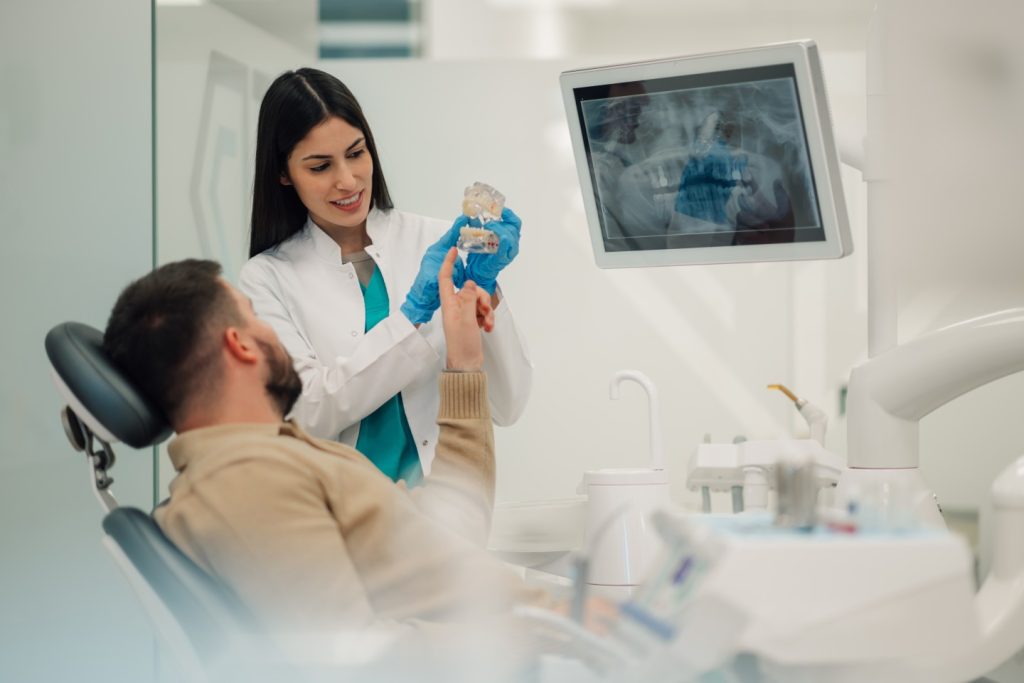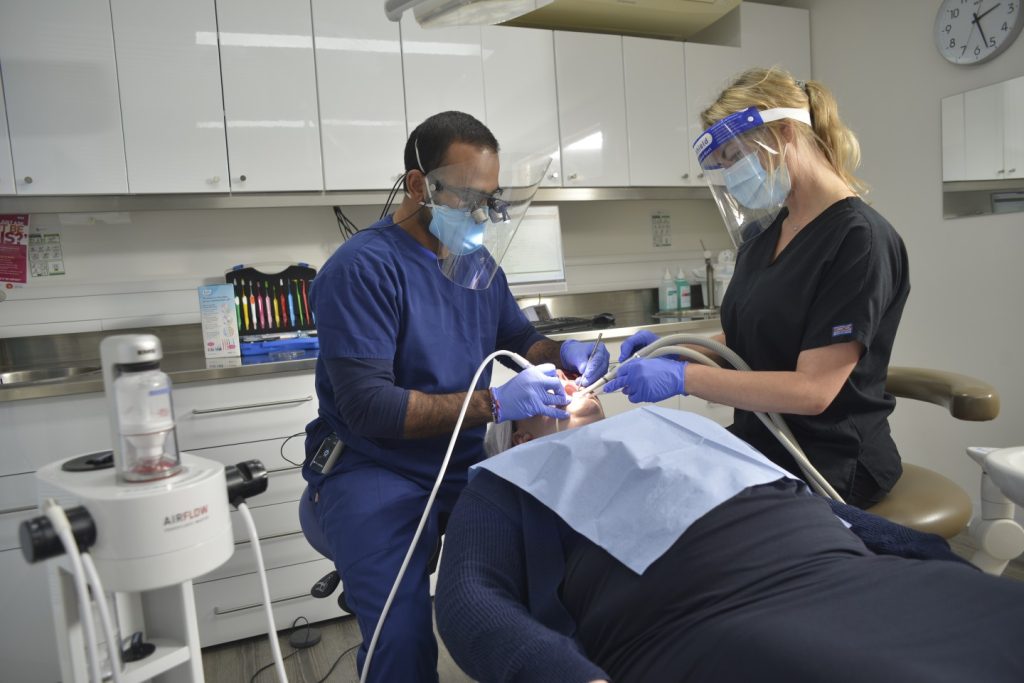Orthodontics
Orthodontic
Treatment
Orthodontic Consultations – Now Half-Price
Thinking about straighter teeth? There’s no better time with our limited-time winter discount on private orthodontic consultations with our Specialist Orthodontist, Dirk Bister.

Efficient Expert Orthodontic Treatment
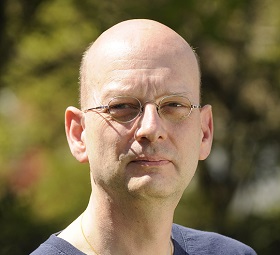
Expert treatment with the most senior Specialist Orthodontist in the area
Orthodontic Consultations – Now Half-Price
with our limited-time winter discount on private orthodontic consultations.
Outstanding, efficient treatment with our Specialist Orthodontist Dirk Bister. Every appointment is in person with Dirk which allows for a thorough physical examination, to create a tailored treatment plan and ongoing monitoring of your treatment progress. No virtual appointments, no appointments with a Therapist
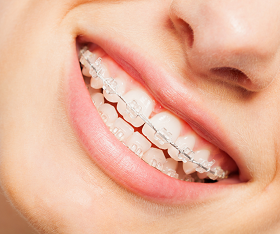
Full range of Orthodontic treatment
Devonshire House is one of the few practices to offer inside and outside fixed braces as well as aligners including the well-known brand Invisalign®
Orthodontic treatment at Devonshire House is tailored to your needs and is extremely efficient in getting you in and out of treatment. We can start treatment within a few weeks of your initial consultation
Braces Explained
Brace Yourself for the Truth
Tooth straightening is often incorrectly thought to involve treatment with metal outside fixed appliances (because this technique is often used).
Due to the widespread use of ‘train track’ – ‘brace’ treatment, many misconceptions persist about orthodontics whicn can result in unnecessary apprehension among those considering Orthodontics.
Find out the truth about braces
Read our blog:
Top 10 Myths About Tooth Straightening Explained
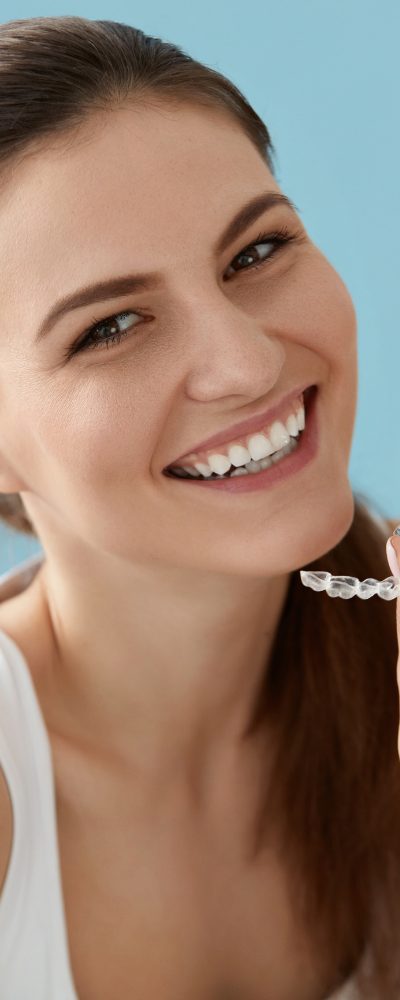

Orthodontic
Treatment Fees
Orthodontic Consultation 30 minutes
£88 – Half price Winter Offer until 28.2.26
Orthodontic Treatment: priced individually, according to type of appliance
from £3,200
What’s included in your treatment fees?
01

More than just braces
All adjustment and emergency appointments with our Specialist Orthodontist
1 Hygienist appointment – To make sure teeth are cleaned by a professional after removal of the appliances and maintain optimal oral health. To advise on cleaning techniques to follow at home.
02
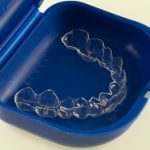
All the extras with no extra cost
Two sports mouthguards – Included is a gumshield to protect your teeth and braces during treatment. A second custom made sports guard will be made after treatment is completed
Retainers to wear post treatment to maintain the new, straightened position of your teeth
Ongoing fluoride treatment throughout orthodontic treatment to reduce the risk of discoloration and decay around the brackets
Written instructions as well as a two Hygiene Kit Bags: one after fitting of the brace and one after completion of treatment

Orthodontic
Dentistry FAQs
On your first consultation you receive a diagnosis and discuss the treatment options available. This includes a cost estimate. There is no obligation to proceed to treatment.
Our Specialist Orthodontist Dirk Bister will discuss estimated costs with you during your first consultation.
During the second visit (if you decide to proceed with treatment) we take full records. Following the appointment you will receive a written treatment plan detailing costs and appointment schedules as well as a consent form.
If you decide not to proceed with treatment after the written plan is sent, you will incur a cost of £400. There is no charge if you proceed with treatment.
In accordance with The British Orthodontic Society guidelines, a quotation for orthodontic treatment can only be provided following an initial consultation as the nature of treatment varies greatly according to each patient.
The British Orthodontic Society states: “Fees for private orthodontic treatment vary widely. The fee varies due to the complexity (difficulty) of the problem, the locality, and the experience of the orthodontist/dentist. Certain techniques such as aligner systems or lingual braces are also more expensive. Prospective patients should always ask for information from the orthodontist/dentist. A written quotation will be given to you but is normally only possible after the orthodontist/dentist has had a chance to assess your problem at a consultation”.
Your treatment plan will detail the cost of your individual treatment required and treatment timeline and outline when payment is required. Please note that if you decide not to proceed with treatment there is a £400 charge for your treatment plan.
- All adjustment and emergency appointments with our Specialist Orthodontist
- 1 Hygienist appointment – To make sure teeth are cleaned by a professional after removal of the appliances and maintain optimal oral health. To advise on cleaning techniques to follow at home.
- Two sports mouthguards – Included is a gumshield to protect your teeth and braces during treatment. A second custom made sports guard will be made after treatment is completed.
- Retainers to wear post treatment to maintain the new, straightened position of your teeth
- Ongoing fluoride treatment throughout orthodontic treatment to reduce the risk of discoloration and decay around the brackets
- Written instructions as well as a two Hygiene Kit Bags: one after fitting of the brace and one after completion of treatment
Unless discussed otherwise, the following costs are not included:
- Any treatment in addition to orthodontics, e.g. extractions, implants, bridgework or orthodontic surgery where required
- Retainer reviews following brace removal. Your orthodontic journey doesn’t end when your braces come off. Regular follow-up appointments are key to keeping your teeth aesthetically pleasing, functional and healthy. At Devonshire House, we recommend reviews with our Specialist Orthodontist Dirk Bister at regular, individually tailored intervals. During our retainer review appointments Dirk will check your retainers and monitor if any tooth movement has occurred.
Yes, at Devonshire House we offer interest-free finance options on all complex treatment to help you spread the cost.
- Oral B Electric Toothbrush (including Travel Case)
- A travel brush with mini toothpaste
- Interdental Brushes to assist with cleaning to navigate around brackets and wires
- Lip moisturiser for dry lips
- Wax to protect lips / tongue form appliances
- Disclosing tablets to identify plaque and areas requiring particular attention when brushing
- Step by step brace care guidance
- Fluoride mouth rinse
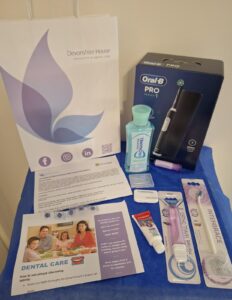
- Sonic cleaner and tablets to clean removable retainers
- Bag of oral hygiene supplies to clean retainer & teeth according to your needs
- Step by Step Cleaning Instructions
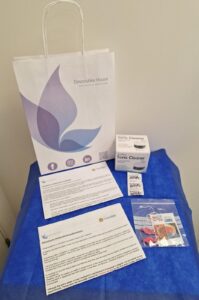
Your orthodontic journey doesn’t end when your braces come off. Regular follow-up appointments are key to keeping your teeth aesthetically pleasing, functional and healthy. At Devonshire House, we recommend reviews with our Specialist Orthodontist Dirk Bister at regular, individually tailored intervals. During our retainer review appointments Dirk will check your retainers and monitor if any tooth movement has occurred.
Testimonials



Other Specialist Dentistry Treatments


